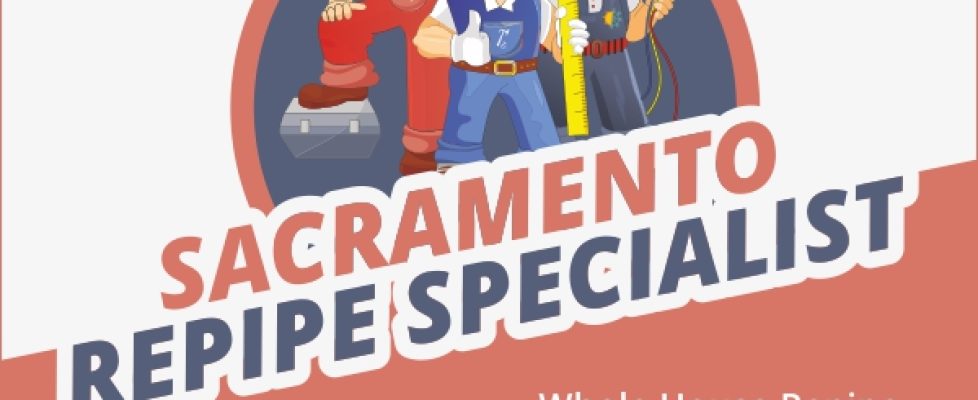Sewer Line Repair & Replacement: Costs & Benefits Guide
- Signs Indicating Sewer Line Damage
- Common Causes of Sewer Line Damage
- When Sewer Line Replacement is Necessary
- Understanding Sewer Line Repair Costs
- Insurance Coverage for Sewer Damage
- Benefits of Trenchless Sewer Repair
- Choosing the Right Sewer Line Replacement
- Final Remarks
- Frequently Asked Questions

In the realm of home maintenance, few issues are as concerning as sewer line problems like clogs, old pipe, and pipe bursting. When faced with the need for sewer line repair and replacement, prompt action is crucial to prevent further damage, especially when dealing with an old pipe or clogs. Whether it’s a simple fix like repairing a sewer pipe or a more extensive project such as sewer main repair, addressing these issues swiftly can save you from costly repairs down the line. Understanding the importance of timely intervention and the various options available for sewer line repair and replacement is key to maintaining your property’s integrity and value.
Signs Indicating Sewer Line Damage
Slow Drainage
If you notice slow drainage in sinks and toilets, it could be a sign of sewer line damage. This occurs when the sewer pipe is clogged or broken, causing water to drain slowly.
Foul Odors
Foul odors coming from drains are another indicator of sewer line issues. These odors are caused by sewer work, sewage not properly flowing through the pipes due to damage.
Gurgling Sounds
When you hear gurgling sounds coming from plumbing fixtures, it might be a warning sign of sewer line damage. These sounds occur when air is trapped in the pipes due to blockages or breaks.
Common Causes of Sewer Line Damage
Tree Roots
Tree root infiltration is a common cause of sewer line damage, leading to blockages and restricted flow. As roots grow, they penetrate sewer pipes, causing them to crack and collapse.
Aging Pipes
Older sewer lines are susceptible to cracks and corrosion due to years of wear and tear. These issues can result in leaks and structural damage, impacting the overall functionality.
Ground Shifting
Ground movements can cause sewer lines to become misaligned or even broken, disrupting the flow of wastewater. This can occur due to soil erosion, earthquakes, or construction activities nearby.
In some cases, tree roots may enter the sewer line through small cracks or loose joints. Once inside, they continue to grow and expand, eventually causing significant blockages that impede proper drainage. As sewer pipes age, they naturally deteriorate, making them more vulnerable to cracks and corrosion. This deterioration can be accelerated by factors such as harsh weather conditions or poor maintenance practices.
While ground shifting is a less common cause of sewer line damage compared to tree roots and aging pipes, it can have severe consequences. For instance, if the ground shifts significantly due to geological factors or human activities like excavation work, it can put immense pressure on the sewer lines. This pressure may lead to misalignment or breakage of the pipes, resulting in leaks and backups.

When Sewer Line Replacement is Necessary
Extensive Damage
Replacement becomes necessary when extensive pipe damage is identified. This can occur due to various factors, such as corrosion or tree root infiltration. The level of damage may render repairs ineffective, making replacement the most viable solution.
Frequent and Costly Repairs
When repairs are frequent and costly, it may be a clear indication that sewer line replacement is the best course of action. Continuously fixing issues can lead to significant expenses over time, making replacement a more cost-effective long-term solution.
Collapsed Sewer Lines
Collapsed sewer lines are a serious issue that often requires immediate attention and replacement. This can happen due to various reasons, including ground shifting, aging pipes, or external pressure on the pipes. In such cases, repair might not be sufficient to restore proper functionality.
Understanding Sewer Line Repair Costs
Repair Method
Repair costs for sewer line repair vary depending on the chosen repair method. For minor issues, spot repairs are cost-effective. However, severe damages might require full sewer line replacement.
Spot Repairs:
- Pros: Affordable for minor damages.
- Cons: Might not be a long-term solution for extensive issues.
Full Replacement:
- Pros: Ensures long-term durability.
- Cons: Higher initial investment compared to spot repairs.
Factors Influencing Costs
Several factors influence sewer line repair costs, including labor, materials, and permits. Labor costs depend on the complexity of the repair and the time required to complete it. Materials like pipes, fittings, and sealants contribute significantly to the overall cost.
Labor:
- Skilled labor is essential for efficient repairs.
- Different repair techniques require varying levels of expertise.
Materials:
- High-quality materials ensure longevity.
- Cheaper materials may lead to frequent repairs in the future.
Permits:
- Obtaining necessary permits adds to the total cost.
- Compliance with local regulations is crucial to avoid penalties.
Getting Multiple Quotes
To make an informed decision about sewer line repair, it’s advisable to obtain multiple quotes from different service providers. Comparing prices and services offered by various professionals can help you choose the most cost-effective option without compromising on quality.
Benefits of Multiple Quotes:
- Allows for a comprehensive cost comparison.
- Helps in evaluating different repair approaches based on price and quality.
- Enables you to negotiate better deals with contractors.

Insurance Coverage for Sewer Damage
Coverage Details
Homeowners, have you ever wondered if your insurance covers sewer line repair? Most policies cover damage caused by sudden and accidental issues like tree roots or pipe collapses.
It’s essential to review your policy to understand the specific coverage for sewer main repair. Some plans may include repairs to the sewer line itself, while others may only cover damages inside your home.
Policy Limitations
Be aware of the limits and exclusions in your policy regarding sewer pipe repair. Policies usually have caps on coverage amounts, so ensure you know the maximum amount your insurer will pay for repairs.
Exclusions are also crucial to understand. For instance, if the damage is due to lack of maintenance or wear and tear, it might not be covered by your insurance.
Benefits of Trenchless Sewer Repair
Minimal Disruption
Trenchless sewer repair minimizes disruption to landscaping and property structures, preserving the aesthetics of your yard. This method involves creating only small access points, unlike traditional excavation.
Trenchless repair utilizes advanced techniques such as pipe lining and bursting, which are highly efficient in fixing sewer line issues. These methods ensure minimal disturbance to your surroundings.
Faster and Cost-Effective
One of the key advantages of trenchless sewer repair is its time-saving nature. Unlike traditional methods that can take days or even weeks, trenchless repair can be completed in a matter of hours.
The cost-effectiveness of trenchless sewer repair is another significant benefit. With reduced labor and machinery requirements, this method offers savings compared to traditional excavation, making it a preferred choice for many homeowners.
Reduced Excavation Needs
Trenchless sewer repair significantly decreases the need for extensive excavation on your property. Traditional repairs often involve digging up large portions of the yard, causing major disruptions and requiring extensive restoration work afterward.
Choosing the Right Sewer Line Replacement
Material Durability
Sewer line replacement should consider material durability to ensure long-term functionality and minimal maintenance needs. Different materials have varying lifespans, impacting the replacement frequency.
Choosing a durable material like PVC or HDPE can significantly extend the lifespan of the new sewer line, reducing the need for frequent repairs and replacements.
Property and Landscaping Impact
When replacing a sewer line, it’s crucial to assess the impact on property and landscaping. Traditional methods like open trenching can cause extensive damage to yards and driveways.
Opting for trenchless techniques, such as pipe lining or pipe bursting, minimizes disruption to the landscape, preserving the aesthetics of the property.
Professional Consultation
Consulting with plumbing professionals is essential to determine the most suitable replacement option based on specific needs and budget constraints. Professionals can provide valuable insights into the best approach for each unique situation.
Professionals can assess factors like linear footage, type of old pipe, and local regulations set by the city when planning sewer line replacement projects.
Final Remarks
You’ve learned the signs of sewer line damage, the common causes behind it, and when replacement becomes necessary. Understanding repair costs, insurance coverage, and the benefits of trenchless solutions has equipped you to make informed decisions. Choosing the right replacement method is crucial for a lasting fix.
Ensure your sewer system’s health by promptly addressing any issues. Regular inspections can prevent costly repairs down the line. Stay informed about insurance coverage options to protect your investment. Remember, acting swiftly can save you time and money in the long run.

Frequently Asked Questions
What are the signs indicating sewer line damage?
Signs of sewer line damage include slow drainage, foul odors, sewage backups, and lush patches of grass. If you notice these issues, it’s crucial to address them promptly to prevent further damage.
What are the common causes of sewer line damage?
Common causes of sewer line damage include tree root infiltration, aging pipes, ground shifting, and clogs from debris or grease buildup. Regular maintenance and inspections can help prevent these issues.
When is sewer line replacement necessary?
Sewer line replacement is necessary when the damage is extensive, such as severe cracks or collapses in the pipe. It’s also recommended when repairs are no longer effective or cost-efficient in resolving the issue.
Are sewer repair costs covered by insurance?
Insurance coverage for sewer repair costs varies depending on your policy and the cause of the damage. Generally, damages caused by accidents or sudden events may be covered, but routine maintenance or wear-and-tear issues might not be included.
What are the benefits of trenchless sewer repair?
Trenchless sewer repair offers benefits such as minimal disruption to landscaping, faster completion time, and cost-effectiveness compared to traditional excavation methods. It’s a popular choice for homeowners looking for efficient and less invasive solutions.
Summary
Meta Description: Expert sewer line repair and replacement services. Affordable costs & benefits guide. Trustworthy methods for repairing sewer pipes and main lines.


